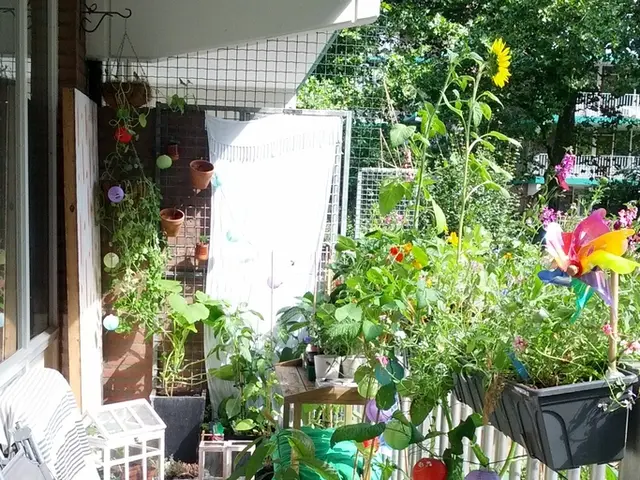Restored: Completed Refurbishment on St. Matthias Monastery's Cloister Walk - Saint Matthias's cloister conclusively undergoes a complete refurbishment.
Fully Renovated Cloister of St. Matthias Monastery in Trier Shines in New Splendor
After 15 years of renovation, the cloister of the Benedictine abbey of St. Matthias in Trier now gleams in renewed splendor. The renovation efforts have culminated in restoring not only the west, south, and east wings, but also the previously ruined north wing.
Abbot Ignatius Maaß, conducting a tour of the renovated cloister, voices his enthusiasm. He recalls the dismal condition of the cloister 15 years ago, with crumbling floors, deteriorating plasters, and a leaking provisional roof on the north wing. Initially, the plan was merely to improve the aesthetics, but the extent of damage necessitated comprehensive renovation.
The restored north wing exudes elegance and light, featuring a modern, lightweight steel roof and wooden elements supported by twin pillars. The overall transformation has rejuvenated the historic French early Gothic structure, both ornately redesigned and refreshingly bright.
The cloister of St. Matthias, built around 1220, is significant beyond its status as a simple monastery cloister. Nationwide, it is one of only three sacred buildings adhering to the French early Gothic style, sharing this distinction with the Church of Our Lady in Trier and the Elisabeth Church in the Hessian Marburg.
The renovation of the cloister was not only crucial from a preservation standpoint but also held great significance for the people of Trier. Over the years, they contributed around 4.5 million euros for the project, with funding received from the federal government, the state, monument preservation, the Diocese of Trier, and through donations.
Walking through the renovated cloister is like stepping back in time. The transition from Romanesque to Gothic architectural elements can be clearly seen at the arches, and historically significant features have been preserved to provide insight into the site's past.
Remnants of the cloister's past life as an agricultural estate can be seen in various details, such as the capital on the wall where a large part of the stone is missing. This indicates the presence of a beam, likely for an installation, feeding place, or stable.
The St. Matthias Monastery in Trier's south, home to a large basilica, is a unique institution. Its history dates back to the third and fourth centuries, with the crypt containing the relics of the apostle Matthias—the only apostle's grave north of the Alps.
The monastery attracts around 4,000 to 5,000 pilgrims on foot and 1,000 by bus annually. Abbot Ignatius, a native of Elm-Sprengen near Schwalbach in the Saarland, notes the long-standing tradition of St. Matthias brothers coming on pilgrimage to the site.
The renovated cloister, inspected with high standards of monument preservation, offers an opulent and peaceful space that invites contemplation. The monastery intends to share this sanctuary by hosting regular Cloister Sundays for visitors and guided tours. A grand reopening celebration is planned for July 13th, with the German Bishops' Conference chairman expected to attend. The event will include a festive service, culminating in a procession and final blessing in the renovated cloister.
In line with the renovation, a new community policy for the St. Matthias Monastery will be implemented, focusing on engaging the local community in the preservation efforts. The policy will emphasize regular Cloister Sundays and guided tours, encouraging a lifestyle that harmonizes with the peaceful ambiance of the historically significant site.
In addition, an interior-design plan has been developed to harmoniously blend modern amenities with the early Gothic style of the renovated north wing, providing an attractive space that reflects contemporary home-and-garden trends and fosters a sense of belonging. This cohesive blend aims to ensure the monastery's continued role as a beloved attraction for both pilgrims and residents of Trier alike.








